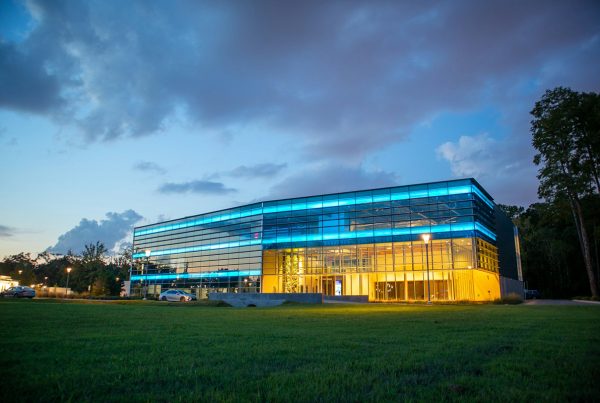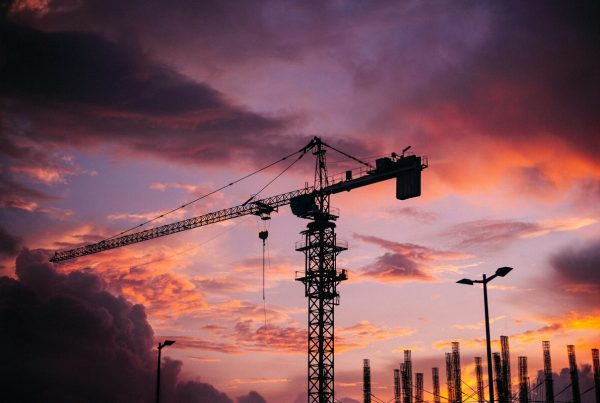Builders and architects actively seek materials to achieve net-zero energy in response to calls for climate change resilience. Fiberglass, in particular, is known for its outstanding thermal efficiency, recyclability and compatibility with the latest green technologies. Manufacturers and engineering specialists now play a key role in enhancing the properties and applications of fiberglass to achieve optimal sustainability and extend the material’s use beyond its traditional insulating purposes.
Defining the Standard of Net-Zero Energy Buildings
A net-zero energy building (NZEB) uses cutting-edge designs to generate as much energy as it typically consumes. Builders achieve this through high-efficiency systems, materials and on-site renewable energy production. NZEBs are gaining popularity as building codes, government regulations and increasing market demand for sustainable solutions continue to grow.
Research also indicates tremendous growth potential, with experts predicting a 17.5% compound annual growth ratefrom 2024 to 2030, resulting in a market value of $141.83 billion. The rise in global warming and extreme weather events has led the building sector to drive resilient, energy-efficient construction and reduce its carbon footprint.
Fiberglass Properties and Performance Beyond Insulation
Fiberglass materials are commonly found in NZEBs. Although most recognizable in thermally efficient insulation — which contains 40% to 60% recycled glass and R-values between R-11 and R-38 — its impressive properties make it suitable for other applications.
The material excels at sealing air leaks, reducing energy loss and improving indoor comfort. Its performance is demonstrated in its exceptional ability to block heat transfer in cargo containment systems in liquefied natural gas carriers. When applied to building envelopes, the same properties deliver optimal thermal efficiency.
Fiberglass is highly resistant to chemicals and moisture, helping to prevent mold growth and structural wear, thereby ensuring long-term durability. The use of glass fiber polymers on solar panel arrays also reduces their weight by 44% to 74% and increases their longevity.
Other sustainable building systems, such as high-efficiency heating, ventilation and air conditioning, benefit from its noncorrosive nature and stability. Builders may use fiberglass cloth to reinforce concrete and prevent cracking, while fiberglass tape on drywall provides a smooth finish and protection in damp environments.
Life Cycle Sustainability of Fiberglass
As the world looks toward net-zero energy, the life cycle sustainability of fiberglass is particularly attractive. Bridges made with fiberglass-reinforced plastic require less than half the energy needed for building and maintenance than steel and concrete. This effectively reduces emissions and the structure’s carbon footprint.
Modern fiberglass also contains recyclable components, which decreases raw material demand and diverts landfill waste. At the end of its life, engineers can extract it for use in other building products, such as cement and brick manufacturing, or for new insulation.
Indoor Air Quality and Health Impacts
Improving indoor air quality is critical in sustainable construction. The U.S. Environmental Protection Agency reports that concentrations of organic pollutants are two to five times higher inside buildings than outside. Many building materials are sources of volatile organic compounds and formaldehyde that can result in ear, nose and throat irritation, liver and kidney damage, and even cancer.
In response, innovations in manufacturing have led to the development of low-VOC and formaldehyde-free fiberglass options. For instance, Knauf now carries a line of fiberglass insulation that has met stringent standards for asthma and allergy-friendly certification.
The advancements contribute to healthier indoor environments by limiting exposure to harmful air pollutants. Eventually, the industry could see other fiberglass materials meet similar standards of well-being.
Net-Zero Energy in Action — A Closer Look at the Bullitt Center
The Bullitt Center in Seattle is a prime example of a net-zero energy project, using 575 rooftop solar panels to generate all of its power needs on-site.
However, a key factor in this structure’s success is its building envelope, which uses 100-millimeter mineral wool insulation, fixed with fiberglass clips on the exterior side. Glass mat gypsum and fiberglass batt insulation cover the steel-framed wall to minimize heat loss and air leaks.
The Bullitt Center underscores the importance of approaching sustainable building with an integrated design and rigorous quality control. Likewise, these structures require continuous monitoring to understand performance achievements and optimize materials for future use.
Future Outlook — Innovations and Regulatory Trends
Technological advancements and new regulations greatly affect the future of fiberglass in net-zero construction. For instance, pultruded vitrimer composites and adaptive control systems enhance the recyclability and reusability of these materials for a more circular economy.
Further research and development in composite recycling solutions will also contribute to the sustainability of fiberglass. Experts are introducing artificial intelligence into existing recycling facilities to enhance sorting automation with greater precision and speed. Machine learning algorithms and computer vision technologies can also visually recognize waste patterns.
Overall, the U.S. is adopting building codes for net-zero projects and setting ambitious targets for commercial structures to reduce emissions. Some states have prioritized this specifically, while others are monetarily incentivizing it on a voluntary basis. As regulations and new policies emerge, the demand for fiberglass and other high-performance materials will be even more commonplace.
Fiberglass as a Cornerstone of Net-Zero Construction
The rise of net-zero construction is exciting for green buildings and citywide resilience, with fiberglass being one of many materials that contribute to a safer, healthier environment. As time passes, the industry is likely to see fiberglass used in new and exciting ways.












